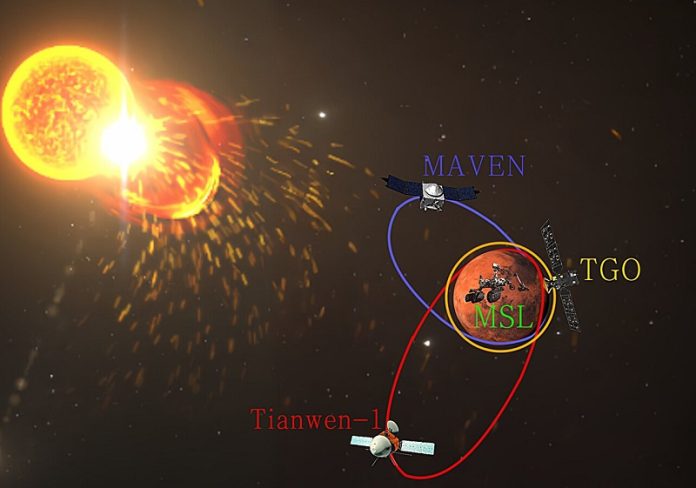
A team of international scientists has created the first complete energy spectrum of high-energy protons during a solar eruption near Mars.
This breakthrough deepens our understanding of the radiation environment around the Red Planet and its potential risks to future exploration missions.
The study, published in Geophysical Research Letters, was conducted by researchers from the University of Science and Technology of China, the Chinese Academy of Sciences, the Lanzhou Institute of Physics, and Germany’s University of Kiel.
Solar energetic particle (SEP) events occur during solar eruptions and are one of the most powerful space weather events.
These events cause sudden spikes in high-energy charged particles, which can damage spacecraft and endanger astronauts.
Unlike Earth, Mars lacks a magnetic field and has only a thin atmosphere, leaving its surface exposed to dangerous radiation.
China’s Tianwen-1 orbiter, which entered its scientific orbit around Mars in November 2021, played a key role in this discovery.
Its Mars Energy Particle Analyzer (MEPA) measures particles with energies ranging from 2 to 100 MeV, enabling it to record detailed data during a powerful SEP event on February 15, 2022.
This event was also detected by the European Space Agency’s Trace Gas Orbiter, NASA’s MAVEN orbiter, and the Curiosity rover on Mars’ surface.
The scientists combined data from these missions to map the complete energy spectrum of the event, spanning proton energies from 1 to 1000 MeV.
They used low- and medium-energy data from Tianwen-1 and MAVEN and high-energy data from Curiosity, supported by simulations of how particles travel through the Martian atmosphere.
This work also allowed the researchers to estimate the radiation dose caused by the SEP event, both in orbit and on Mars’ surface. Their calculations matched real-world radiation measurements, confirming the reliability of their methods and the accuracy of Tianwen-1’s data.
The study provides a valuable reference for future research on solar radiation near Mars and emphasizes the importance of ongoing radiation monitoring.
As humanity prepares for manned Mars missions, understanding and mitigating these radiation risks is essential for the safety of astronauts and equipment.



